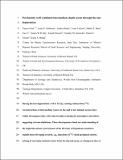Files in this item
Persistently well-ventilated intermediate-depth ocean through the last deglaciation
Item metadata
| dc.contributor.author | Chen, Tianyu | |
| dc.contributor.author | Robinson, Laura F. | |
| dc.contributor.author | Burke, Andrea | |
| dc.contributor.author | Claxton, Louis | |
| dc.contributor.author | Hain, Mathis P. | |
| dc.contributor.author | Li, Tao | |
| dc.contributor.author | Rae, James W. B. | |
| dc.contributor.author | Stewart, Joseph | |
| dc.contributor.author | Knowles, Timothy D. J. | |
| dc.contributor.author | Fornari, Daniel | |
| dc.contributor.author | Harpp, Karen S. | |
| dc.date.accessioned | 2021-04-11T23:46:36Z | |
| dc.date.available | 2021-04-11T23:46:36Z | |
| dc.date.issued | 2020-10-12 | |
| dc.identifier | 270461130 | |
| dc.identifier | 4e807e4d-1a47-4110-8bd8-29c12bc73e58 | |
| dc.identifier | 000577033800002 | |
| dc.identifier | 85092345107 | |
| dc.identifier.citation | Chen , T , Robinson , L F , Burke , A , Claxton , L , Hain , M P , Li , T , Rae , J W B , Stewart , J , Knowles , T D J , Fornari , D & Harpp , K S 2020 , ' Persistently well-ventilated intermediate-depth ocean through the last deglaciation ' , Nature Geoscience . https://doi.org/10.1038/s41561-020-0638-6 | en |
| dc.identifier.issn | 1752-0894 | |
| dc.identifier.other | ORCID: /0000-0002-3754-1498/work/82179649 | |
| dc.identifier.other | ORCID: /0000-0003-3904-2526/work/82179650 | |
| dc.identifier.uri | https://hdl.handle.net/10023/23008 | |
| dc.description | This study was funded by the European Research Council, the Natural Environment Research Council (NE/S001743/1; NE/N011716/1), the Philip Leverhulme Trust, the Strategic Priority Research Program of Chinese Academy of Sciences (XDB40010200), the National Natural Science Foundation of China (41822603), the US National Science Foundation (OCE-0926637, OCE-10309040 and OCE-0926491), a Marie Curie Reintegration Grant and the NOAA (National Oceanic and Atmospheric Administration) Ocean Exploration Trust. | en |
| dc.description.abstract | During the last deglaciation (~18–11 thousand years ago), existing radiocarbon (14C) reconstructions of intermediate waters in the mid- to low-latitude oceans show widely diverging trends, with some broadly tracking the atmosphere and others suggesting extreme depletions. These discrepancies cloud our understanding of the deglacial carbon cycle because of the diversity of hypotheses needed to explain these diverging records, for example, injections of 14C-dead geological carbon, mixing of extremely isolated waters from the abyssal ocean or changes in sites of deep-water ventilation. Here we present absolutely dated deglacial deep-sea coral 14C records of intermediate waters from the Galápagos Platform—close to the largest reported deglacial 14C depletions—together with data from the low-latitude Atlantic. Our records indicate coherent, well-equilibrated intermediate-water 14C ventilation in both oceans relative to the atmosphere throughout the deglaciation. The observed overall trend towards 14C-enriched signatures in our records is largely due to enhanced air–sea carbon isotope exchange efficiency under increasing atmospheric pCO2. These results suggest that the 14C-depleted signatures from foraminifera are likely sedimentary rather than water mass features, and provide tight 14C constraints for modelling changes in circulation and carbon cycle during the last deglaciation. | |
| dc.format.extent | 14500186 | |
| dc.language.iso | eng | |
| dc.relation.ispartof | Nature Geoscience | en |
| dc.subject | GE Environmental Sciences | en |
| dc.subject | GC Oceanography | en |
| dc.subject | DAS | en |
| dc.subject.lcc | GE | en |
| dc.subject.lcc | GC | en |
| dc.title | Persistently well-ventilated intermediate-depth ocean through the last deglaciation | en |
| dc.type | Journal article | en |
| dc.contributor.sponsor | NERC | en |
| dc.contributor.institution | University of St Andrews. School of Earth & Environmental Sciences | en |
| dc.contributor.institution | University of St Andrews. St Andrews Isotope Geochemistry | en |
| dc.identifier.doi | 10.1038/s41561-020-0638-6 | |
| dc.description.status | Peer reviewed | en |
| dc.date.embargoedUntil | 2021-04-12 | |
| dc.identifier.grantnumber | NE/N011716/1 | en |
This item appears in the following Collection(s)
Items in the St Andrews Research Repository are protected by copyright, with all rights reserved, unless otherwise indicated.

